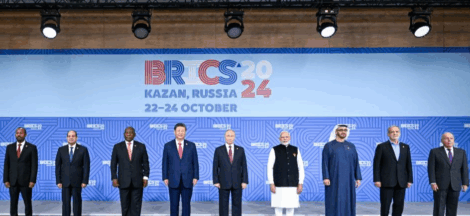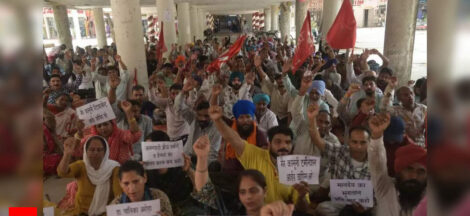By Ashis Biswas
Even as the civil war rages on in Myanmar, there is fresh concern among GOI circles regarding a somewhat disturbing report in the Sri Lankan media, stating that some Indians were being “held” as prisoners in what have been described as “terror camps” in the strife-torn country.
Kolkata-based intelligence agencies neither confirm nor deny the reports, which quote Sri Lankan ambassador Janaka Bandara as their main source. Striving to secure the safe return of a few Sri Lankan youths, reportedly detained as “cyber slaves” in the “terror camps in Myanmar”, the ambassador has sponsored a major diplomatic initiative from Colombo: Put together a joint six-nation diplomatic mission to address the problem.
Open source reports say officials representing Bangladesh, Myanmar, Thailand, Nepal and Bhutan have been involved by Sri Lanka, along with India, to take up the issue with the Myanmar authorities. The political establishment in Colombo became alarmed as first reports of Sri Lankans being used as “slaves” in a terror camp began circulating some days ago.
Bandara also made the startling revelation which has so far gone unreported by mainstream Indian media. He asserts that at least 200 Indians were being used as “cyber slaves” at a ‘terror camp in Myanmar’. This was what he learnt during his preliminary investigations into the matter. Therefore, it can be safely assumed that GOI authorities are in possession of the facts as reported by the ambassador, although there has been no official reaction from Delhi so far. No details have been provided as to which forces held captives, nor the specifics of the “terror camp”. It is also unclear which armed outfit was running the terror camp.
However, the absence of details does not diminish the factual validity of the ambassador’s revelations. The Sri Lankan Government is leading the new seven-member delegation of regional countries to meet the Naypyidaw-based Myanmar army authorities to discuss the situation immediately.
Along with a few smaller groups, Chin and Shan tribes have been waging an armed running battle against successive regimes ruling Myanmar. Seeking greater autonomy from the Burmese majority, such groups already enjoy a measure of undeclared autonomy in the territories bordering India and China.
Several factors complicate the present scenario, dominated as it is by the prolonged civil war that has broken out in Myanmar since February 2021. The Myanmar army headed by Gen Min Hlaing forcibly took over the state administration from civilian rule, administered by the elected government headed by Aung San Suu Kyi, the iconic Nobel laureate symbolising the fight for democracy and political freedom for the people of Myanmar.
Large sections of “pro-democracy” people supporting the Suu Kyi-led National League for Democracy immediately rallied against the junta and in time they were joined by other armed groups and the ethnic tribal organisations. The joint anti-junta front almost immediately received major material and moral support from the US and EU countries.
It did not take long before the ‘civilian’ protests against the junta turned into a planned and prolonged armed resistance. Large parts of the country have been ravaged with an estimated 1.9 million people displaced and over 6550 people feared to have been killed, with over 60,000 buildings reduced to rubble. Given this context, securing accurate real-time information and ensuring factually correct media coverage from Myanmar has become extremely difficult, with the censorship restrictions already in place.
As things stand, India’s relations with the ruling army junta remain normal with communications also remaining effective. The most recent interaction with Myanmar occurred when a request was conveyed to Indian authorities by Naypyitaw for Delhi to arrange for the return of some Burmese soldiers who had crossed into India. The soldiers had fled armed militant groups operating in Myanmar. It should not, therefore, be difficult for Delhi to get the details of the 200 Indians allegedly held as “slaves” in a Myanmar “terror camp” and secure their release and return. (IPA Service)



